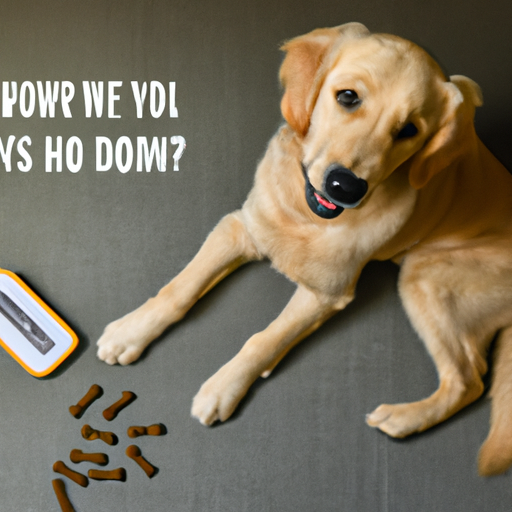Introduction
Training your dog can be a rewarding endeavor. Not only does it help to establish a bond between you and your furry friend, but it also ensures that they behave properly. In this comprehensive guide, we will walk you through the essential steps and tips for successful dog training.
Step 1: Start with Basic Commands
Training your dog starts with teaching them the basic commands. These include “sit,” “stay,” “come,” “down,” and “heel.”
-
Sit: Hold a treat close to your dog’s nose and move your hand up, allowing their head to follow the treat causing their bottom to lower. Once they’re in sitting position, say “sit,” give them the treat and share affection.
-
Stay: This command could save your dog’s life. First, ask your dog to “sit.” Then open your palm in front of you and say “stay.” Start by taking a few steps back and reward them for staying.
-
Down: This can be a difficult command to teach, as it puts your dog in a submissive posture. Find a particularly good-smelling treat, and hold it in your closed fist. Hold your hand up to your dog’s snout. When they sniff it, move your hand to the floor, so they follow.
-
Come: This command could also save your dog’s life. Start this training in a quiet area. Put a leash and collar on your dog and say “come” while gently pulling on the leash.
-
Heel: This command is essential for keeping your dog close and controlled during walks. Walk with your dog on your left side and keep the leash short (but not tight) so your dog stays close to you.
Step 2: Use Positive Reinforcement
Positive reinforcement is key in dog training. This means rewarding your dog for good behavior, such as giving them treats, toys, praises, or petting.
- Treats: Dogs respond well to treats. Always have a bag of their favorite ones during training.
- Toys: Some dogs prefer toys over treats. Find out what your dog loves and use it as a reward.
- Praises: Compliment your dog when they perform a command correctly. A simple “good boy/girl” can work wonders.
- Petting: Physical affection can be a powerful reward for your dog. A pat on their head or a belly rub can make them feel loved and appreciated.
Step 3: Consistency is Key
Consistency is crucial in dog training. Everyone in your household should use the same commands and rewards system.
| Command | Action | Reward |
|---|---|---|
| Sit | Lower bottom | Treat |
| Stay | Remain still | Praise |
| Down | Lower body to the ground | Treat |
| Come | Approach you | Petting |
| Heel | Walk by your side | Treat |
Step 4: Socialize Your Dog
Socializing your dog with other dogs and people is essential for their development. It helps to reduce fear and aggression, and it teaches them proper behavior.
Step 5: Stay Patient and Positive
Patience and positivity are key when training your dog. Remember, training should be a fun and enriching experience for both of you.
Step 6: Seek Professional Help when Needed
If you’re struggling with training your dog, don’t hesitate to seek help from a professional dog trainer. They have the knowledge and experience to deal with various behavioral problems and can provide guidance.
Step 7: Practice Regularly
Like any skill, practice makes perfect. Regular training sessions, even just a few minutes a day, can help your dog remember the commands better.
Step 8: Gradually Increase the “Three D’s”
During training, gradually increase the “Three D’s”: Duration (how long your dog can perform a command), Distance (how far away you are when your dog performs the command), and Distraction (how well your dog performs the command with distractions present).
Frequently Asked Questions
How long should each training session be?
Each training session should last about 15 minutes. It’s more beneficial to have multiple short sessions than one long one.
When should I start training my puppy?
You can start training your puppy as early as 8 weeks old.
How can I teach my dog to stop barking?
Teaching your dog the “quiet” command is a good starting point. If barking persists, consider seeking help from a professional dog trainer.
How can I make my dog stop jumping on people?
Teach your dog the “sit” command. If they are sitting, they cannot be jumping at the same time. Reward them for sitting and not jumping.
What should I do if my dog doesn’t respond to training?
Patience is key. If you’re still having trouble, consider consulting with a professional dog trainer.
Remember, training a dog takes time, patience, and consistency. But the end result—a well-behaved dog and a stronger bond between you—is well worth the effort. Happy training!



